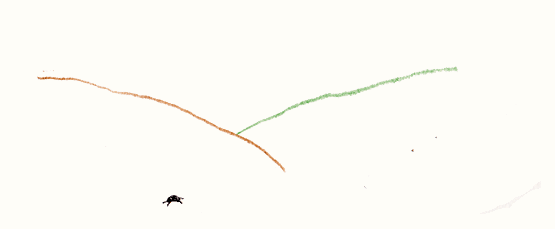Parliaments of Dartmoor

Camping in Dartmoor April 2011. Lost in vast expanses of space, it is somehow easier to speculate on the future, and potential social imaginaries. Dartmoor is a particularly appropriate place as it is full of anomalies. Although much of it is privately owned, we can roam across the empty desolation with few restrictions thanks to the Dartmoor Commons Act of 1985. The rugged landscape is itself the result of ecological collapse. Once upon a time Dartmoor was a dense forest. Then came farming and overfarming which upset the balance. Turning forestry into fields progressively eroded the natural cover of oak trees. Disaster awaited. Without the trees to hold together the soil, the nutrients were washed away. Crops failed, livestock died and Dartmoor became the soggy barren moorlands we know today.
But the seeming emptiness holds other surprising lessons for us, amongst them the institution of the Tinners Parliament. Here in the wide open, tinners from the tin mines in Devon set up a parliament - to assemble once a year amongst a few craggy rocks spaced about 5 metres apart at the top of one of Dartmoor’s tors or hills. Rulings made by the Tinners Parliament (also known as the Stannary Parliament) had the power to ignore some of the rulings of the Parliament in London and Stannary Law at times took precedence over Common Law. Whilst dating back to the 11th century, Stannary Law powers remain to this day, at least on paper, as they were never rescinded by the government at Westminster. The idea of a state holding multiple parliaments in place whose laws take gravitate over each others’ without contradiction alludes to the notion of complementarity, a way of conceptualising reality from two different standpoints simultaneously.
The idea of complementarity comes from modern physics. The physicist Niels Bohr put it simply as the complementarity principle which states that some objects have multiple properties that appear to be contradictory, so that it is possible to switch back and forth between 2 different views of an object to observe these properties. However in principle, it is impossible to view both at the same time, despite their simultaneous coexistence in reality. With the complementarity principle Bohr brought about a crisis in Western science; though scientists understood that their methods were reductive, complementarity was all together too unwieldy a concept to work with. The conflict became narrativised in the Bohr v Einstein debate, Bohr’s complementarity v Einstein’s grand theory of everything, the one system fits all. The universe does not play by 2 sets of rules said Einstein. Bohm argued that we need to change what we mean by science.
Complementarity suddenly stood between us and a solid understanding of the universe, its foundations; naturally this has political ramifications. The form of modern politics is equally reductive like that of modern science, both are products of Enlightenment rationality. What complementarity holds for science, it also holds for politics; to paraphrase Bohr, thus, we need to change what we mean by politics.
The political challenge of complementarity lies in how it translates into social processes, between a central state and local laws, between the national and the parochial. This is to mediate on what forms complementarity can assume in future places of assembly for new political forms. Politics depends on the creation of an ‘agonising’ space – Agon, as the space to mediate conflict as equals. The agonising space is what Chantal Mouffe regards as the core basis out of which a democratic political process emerges. A possible conception of society based on complementarity is not about privileging the local over the central, the Individual over the State, nor a matter in the belief of ‘small is beautiful’ or that ‘big is best’. Complementarity is not to be understood in terms of dialectical progress that modernist ideology is built upon. Rather complementarity is a dynamic state of being, and that requires a greater shift in perspective from current modes of thinking about social possibilities.
Thankfully if we need inspiration the moors offer us enough examples to draw from nature whereby forms of life from entirely different historical phases and ways of reproducing co-exist through symbiosis. If we poke into the tiny spaces of moss, lichens and fungi that cover much of the vast expanse of the moorlands, we find not only that different life forms co-exist but also that they would be unable to exist here without the presence of the other. Symbiosis can be seen as a way of increasing the ecological range of each, converting historical monoculture to multi coordinates of existence: the fungus which lacks chlorophyll uses the algae or bacteria to produce energy through photo-synthesis; the algae or bacteria enjoys the protection the fungus provides. The lichen is a composite organism based a symbiotic relationship between fungus and algae, whilst the moss on the top of the lichen is a plant.
Like complementarity the symbiotic nature of lichen was not fully understood until the 19th century, when the idea of symbiosis was first proposed. It seems we are retrospectively becoming aware of the layers of nature. But to advance further without wrecking the planet perhaps we need to get beyond the ‘exclusionary reflex’ of western science to arrive at an inclusive capacity which requires more than one framework.
In as much, to poke too deeply into this desolate ensemble is to overturn the uni-directional notions of causality and of relations and of history.

